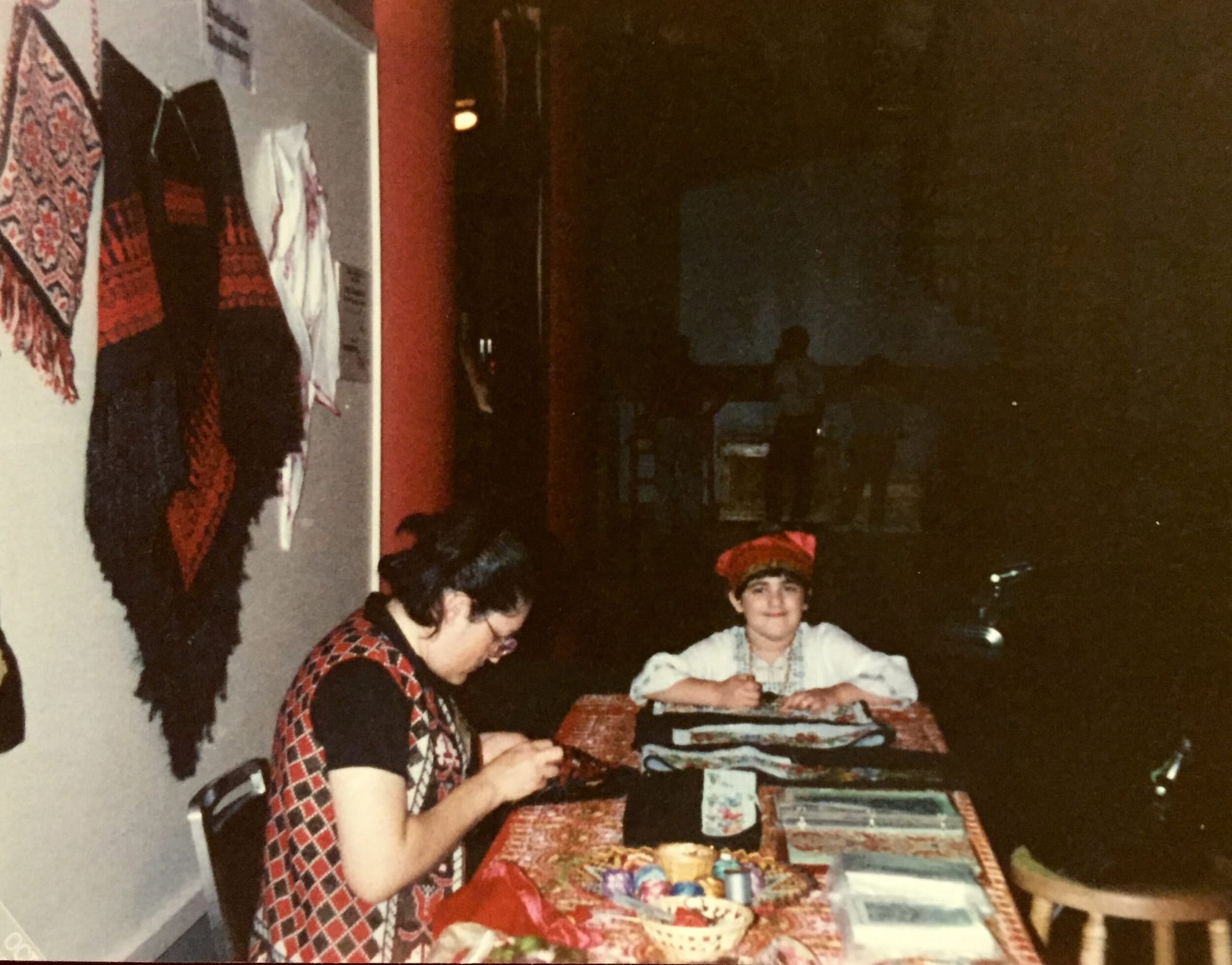Palestinian embroidery and resistance
An interview with Wafa Ghnaim about art and the movement for Palestinian liberation.
Welcome to the art rebellion, a newsletter amplifying the essential role of artists in our society and the stories of artists who fight to make their communities better.
Last week, I had a great conversation with Wafa Ghnaim, a Palestinian American researcher, author, educator, and artist based in New York. Wafa is the founder of Tatreez & Tea, an educational arts initiative focused on the preservation, documentation and research of textiles in the South West Asia & North Africa region.
On Oct. 10, Wafa, along with collaborators Kat, Noor, and J launched a call to action, inviting artists to stitch Palestinian resistance patterns. These motifs include watermelons — a contemporary symbol of Palestinian resistance on social media, spoons — honoring six Palestinian prisoners who escaped an Israeli jail using spoons in 2021, and Handala — a character created in 1969 by political cartoonist Naji al-Ali — with a Palestinian flag.
The goal is capturing and reflecting the present day Palestinian experience and flooding social media with solidarity, art and inspiration. “I didn’t want us to forget who we are, who we were as Palestinians,” she says. “We are a people of creation. We are a people of love and life and arts and culture.”
Recently, I’ve been experimenting with different forms of storytelling and published the full interview to YouTube, which I hope you’ll watch.
Interview highlights
Wafa learned Palestinian embroidery, or tatreez, from her mother, artist Feryal Abbasi-Ghnaim, when she was two years old. For years, Wafa has been teaching the art form across the U.S. — in universities, Palestinian communities, and to non-Palestinians interested in embroidery.
One line from the Tatreez & Tea site really stuck out to me: “The Tatreez Institute is not a service to the culturally curious— it is an active agent in fighting for Palestinian liberation.”
I asked Wafa about her decision to enforce those community guidelines and this was her response:
In the US specifically, there’s already a cultural embroidery practice among white Americans. And I started to become more and more of a resource in those circles to teach Palestinian embroidery. At first, it was kind of a novelty — I can spread the word and I can get these people who probably watch the news and hear all kinds of things about Palestinians to stitch with me for a few hours to learn about our people and expand their ideas about who we are.
After that period of novelty, the types of responses I received from some of those communities — they were threading their needle with me, but just because they wanted another pattern to stitch. It had nothing to do with raising their voice, and they had no interest in changing their mind. They just wanted to take these patterns to learn from me, learn our history, and to walk away and either sell the embroidery that they make that has our motifs, and appropriate our motifs.
This became really frightening for me. So I wanted to make it really clear where I stood.
I decided to make a really clear statement that I’m not interested in teaching people who are culturally curious. I’m interested in activating people to educate others in their own communities so that they can raise awareness about who we are as a people. We Palestinians also love life, and we also love art, and we also love culture, and we also produce beautiful things with our hands. And I don’t want to be tokenized or felt like I was contributing to the erasure of my people.

Wafa also talked about how artists can help support the movement for Palestinian liberation:
I think artists have so much agency in visual language. We talk a lot about amplifying Palestinian voices. We’re not just talking about the actual voice of what you hear. When we say amplify Palestinian voices, we’re saying all the ways that our voices emerge through literature, literary arts, visual arts, performance arts, musical arts. All of these kinds of ways. I think that artists have a really unique position — Palestinian artists specifically — but also any artist to use their visual language that’s within their toolbox of what they do to amplify Palestinian voices and to express Palestinian culture in some way.
When asked how people can support her work, Wafa emphasized that for Palestinian embroidery to live, Palestinians also need to live.
She urged people to call for a ceasefire, call their representatives, join protests, and raise their voices. “This is ultimately what our power is to do at a moment like this, to be very unrelenting and persistent is very needed at this moment.”
And finally, she had a parting note about repatriating Palestinian dresses:
I want to call on all those non-Palestinians in the United States, even Canada, who have our dresses and don’t know what to do with them — that now might be a really great time to return them to us. We appreciate their stewardship of caring for those dresses, but they need to return them to our culture. We need to be able to access those dresses and learn about our history through those dresses.
Linky links
- Accessibility in dance: How dancers and choreographers are developing innovative audio description practices
- GQ's interview with André 3000 about his dreamy new ambient music project
- Slow Factory’s short guide to the skills and roles needed for collective liberation
As always, thank you for taking time to read this newsletter. I'll be back in your inboxes in a couple weeks for the final newsletter of the year 😳.
Please consider sharing the art rebellion with a friend and following this work on Instagram and TikTok.
See y’all next time.
